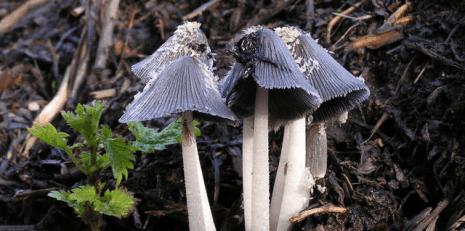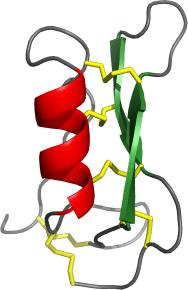You just have to applaud the researcher that study mushrooms growing on horse dung to see what medicinal properties they have. Microbiologists molecular biologists at ETH Zurich and the University of Bonn have discovered a new agent in fungi that kills bacteria. The substance they found in the mushroom is called copsin. Copsin has a similar effect to antibiotics, but belongs to a different class of biochemicals – it is a protein, whereas antibiotics are generally non-organic compounds.

“Fungi and bacteria compete with an arsenal of secreted molecules for their ecological niche. This repertoire represents a rich and inexhaustible source for antibiotics and fungicides. Antimicrobial peptides are an emerging class of fungal defense molecules that are promising candidates for pharmaceutical applications.”, researchers explain in the study.
Coprinopsis cinerea is a common species of mushroom; you’ve probably seen it yourself, especially if you spent time on farmlands or in the mountains. But it’s quite an interesting species as well; its genome was sequenced in 2010, and biologists consider it an important model organism for studying fungal sex and mating types, mushroom development, and the evolution of multicellularity of fungi.
When they initially started their research, scientists wanted to see how the fungus and different bacteria interact and affect each other’s growth, but they quickly found that the fungus kills of certain kinds of bacteria. Further research indicated that it is the copsin in the mushrooms which kills the bacteria, and the research took a different turn.
Copsin is a defensin, a class of small proteins produced by many organisms to combat microorganisms that cause disease. While its clear that the substance does have antibacterial properties, it’s not clear if it will be incorporated in an antibiotic any time soon. Markus Aebi, Professor of Mycology and the team’s leader said:
“Whether copsin will one day be used as an antibiotic in medicine remains to be seen. This is by no means certain, but it cannot be ruled out either,” he says.

For him, copsin raises other intriguing questions. For starters, why is it that fungus have been using copsin successfully against bacteria for millions of years, while human-used antibiotics have already led to resistant germs in a few decades? What makes copsin different to current antibiotics? The questions are highly challenging.
“Fungi have internal instructions on how to use these substances without resulting in selection of resistant bacteria. How to decode these instructions is an intriguing problem for basic research,” explains Aebi.
Andreas Essig, a postdoc in Aebi’s group and lead author of the study is more interested in the potential medicinal use of the substance. He has already registered potential applications of copsin for patent approval.
“Copsin is an exceptionally stable protein,” says Essig. Proteins are generally susceptible to protein-degrading enzymes and high temperatures. Copsin is an exception because it also remains stable when heated to a temperature of 100 degrees Celsius for several hours or when subjected to protein-degrading enzymes.
Researchers believe that it’s the protein’s remarkable 3D structure that gives it such a great resistance. In addition to its potential use as an antibiotic, copsin might also be used in the food industry, because it kills many pathogens including Listeria, a type of bacteria that can cause severe food poisoning, especially in raw milk cheeses and dried meats.
Journal Reference: Andreas Essig, Daniela Hofmann, Daniela Münch, Savitha Gayathri, Markus Künzler, Pauli T. Kallio, Hans-Georg Sahl, Gerhard Wider, Tanja Schneider and Markus Aebi. Copsin, a novel peptide-based fungal antibiotic interfering with the peptidoglycan synthesis. doi: 10.1074/jbc.M114.599878






